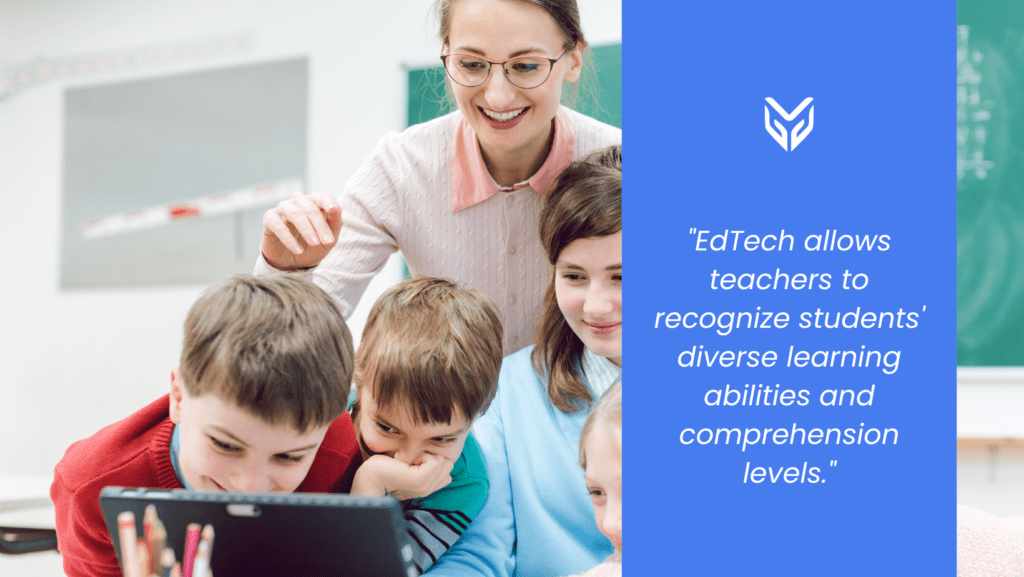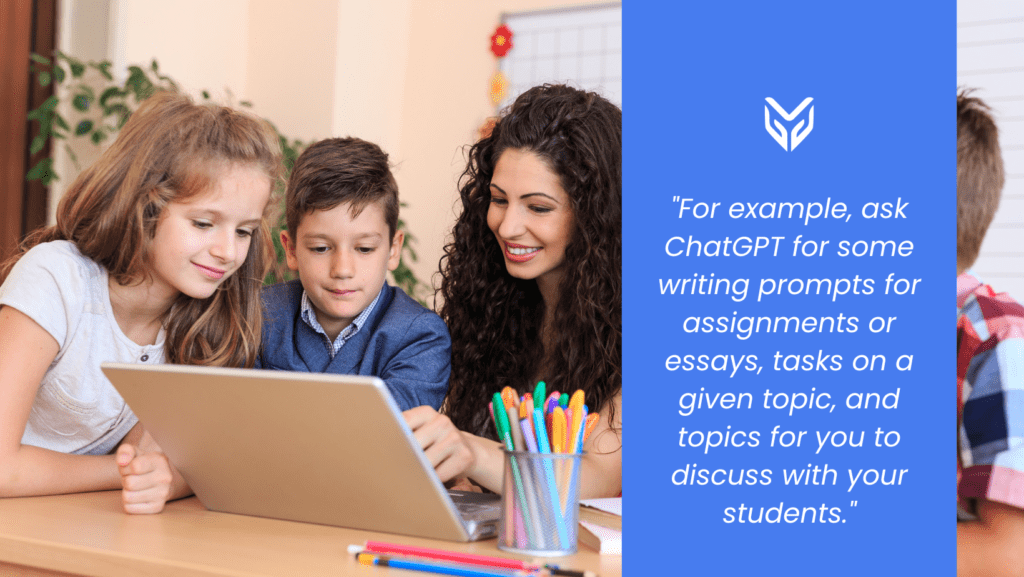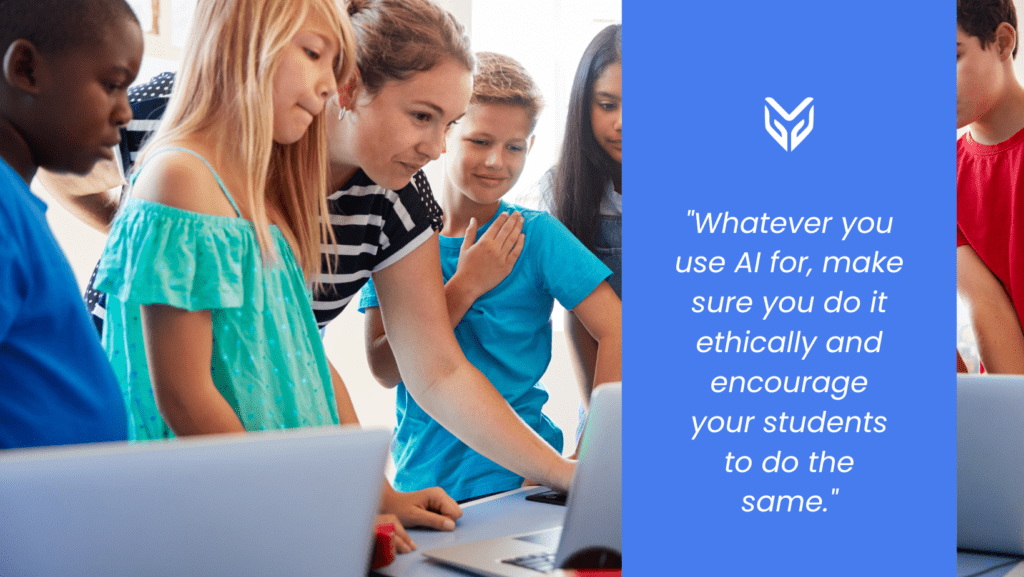NEWS
ChatGPT in Schools: An Innovative Approach to Learning

Author George Couros once wrote, “Technology will never replace great teachers, but technology in the hands of a great teacher can be transformational.” The act of teaching is more than just conveying information – books are capable of doing that job. Instead, a teacher’s role involves guiding, mentoring, and leading students through their academic and professional journeys. As teachers, you lay the foundation for the future, and this is a task that cannot be replaced by technology. However, using educational technology (EdTech) can be a big game-changer for the learning experience. And even ChatGPT in schools is becoming a thing.
Rather than viewing technology and teachers as two diverging sources, we should regard them as two converging sources of knowledge. EdTech allows teachers to recognize students’ diverse learning abilities and comprehension levels. And using technology can also help you modify your teaching approach accordingly.

Schools and teachers must upgrade their learning tools to make the learning experience the best possible. And besides using electronic devices and several EdTech gadgets, tools like ChatGPT, an AI chatbot developed by Open AI, stand out from the others.
EdTech Is Here To Improve the Learning Experience
Incorporating ChatGPT into the classroom can revolutionize the way students learn. For instance, teachers can use ChatGPT to create interactive activities such as games, quizzes, and simulations that engage students and foster critical thinking. As a teacher, you can also use this to facilitate personalized learning centered on the student by providing personalized feedback and recommendations based on individual learning styles and preferences.

However, it is important to note that the ethical use of ChatGPT is crucial in ensuring that it does not replace critical thinking or simply boost efficiency. Instead, you can use it to facilitate deeper learning and encourage students to engage in thoughtful, reflective activities. Even the most creative of us surely run out of ideas sometimes. So, here are some ways you can use ChatGPT in planning your school lessons.
#1 Use Prompts To Plan Instruction and Tasks for Students
Use ChatGPT in schools to generate prompts, inquiries, or discussion topics that will stimulate your students to engage in profound thinking. By presenting open-ended questions or novel concepts, you will create an atmosphere fostering creative thinking and problem-solving abilities among students. With it, you will promote a learning environment that is conducive to growth and development.
For example, ask ChatGPT for some writing prompts for assignments or essays, tasks on a given topic, and topics for you to discuss with your students. Make sure to include which age group you want it to be appropriate for, the subject, the wanted timeline, etc.

#2 Use ChatGPT To Simplify Learning Material
If you find yourself struggling to explain a complex idea, ChatGPT can help. Just ask it to “explain it to a first grader” or whichever age group you teach. For instance, if you ask the bot to explain photosynthesis to a first grader, this is its answer:
Photosynthesis is how plants make their food. Just like how you need food to grow and stay healthy, plants need food too! But instead of going to the store to buy their food like we do, plants make their food themselves. Plants use a special part of their leaves called chlorophyll to make their food. Chlorophyll is what makes plants green. It takes in light from the sun and turns it into energy that the plant can use. So, when you see a plant outside in the sun, it’s actually making its own food! Pretty cool, huh? (written with ChatGPT).
#3 Use AI To Generate Handouts
Another thing ChatGPT in schools can help you do is generating handouts and similar assignments for the students. It can do everything from making flashcards, producing content for posters, and creating solved problems (like math problems and chemistry equations with explanations of each step). Besides that, you can also ask it to help you with student assessment. With your careful oversight, you can create assessments, like quizzes and cloze tests, with it.
#4 Foster Ethical Use of AI in Education
Whatever you use AI for, make sure you do it ethically and encourage your students to do the same. ChatGPT provides a plethora of advantages, but its ethical usage is of utmost importance – especially in educational environments. So, to set an example, don’t use the tool as a shortcut but more as an auxiliary tool to enhance learning.

To prevent violations of copyright laws, exercise caution and encourage students to confirm and properly cite the AI’s output. Also, address the potential misuse of ChatGPT by students. Its accessibility may encourage them to rely on it for completing assignments and the like. So, ensure they know what qualifies as cheating and use the tools to recognize AI-written content.
Thus, ChatGPT in Schools Can Be an Excellent Way To Enrich Learning
The intrinsic qualities of teachers distinguish you from computers, making you superior in the realm of education. However, using ChatGPT in schools can be an excellent tool for upgrading the classroom experience.
To conclude, integrating ChatGPT in schools has immense potential to revolutionize how students learn. It can empower you to foster creativity, critical thinking, and personalized learning, leading to a more interactive and practical learning experience. However, it is crucial to ensure that ChatGPT is used ethically to facilitate deeper learning and not simply boost efficiency.





